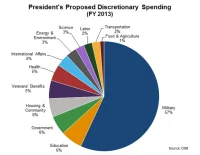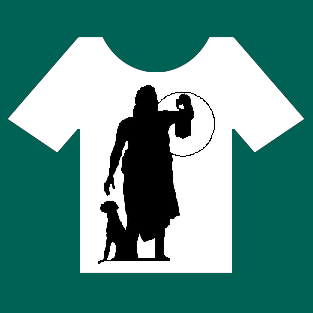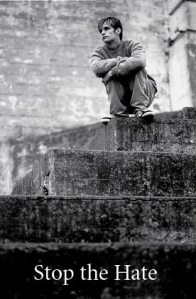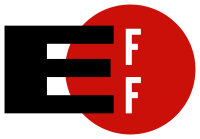On this date, Phnom Penh in Cambodia fell under the control of the Khmer Rouge, the guerrilla group led by Pol Pot that was funded and fueled by Chinese Communists. Pol Pot immediately directed a ruthless program to “purify” Cambodian society of capitalism, Western culture, religion, and all foreign influences. He wanted to turn Cambodia into an isolated and totally self-sufficient Maoist agrarian state. Foreigners were expelled, embassies closed, and the currency abolished. Markets, schools, newspapers, religious practices, and private property were forbidden. Members of the Lon Nol government, public servants, police, military officers, teachers, ethnic Vietnamese, Christian clergy, Muslim leaders, members of the Cham Muslim minority, members of the middle-class, intellectuals, and the educated were identified and executed. Anyone who opposed was killed.

An undated photograph shows forced laborers digging canals in Kampong Cham province, part of the massive agrarian infrastructure the Khmer Rouge planned for the country.
The Khmer Rouge forced all city residents into the countryside and to labor camps. During the three years, eight months, and 20 days of Pol Pot’s rule, Cambodia faced its darkest days; an estimated 2 million Cambodians or 30% of the country’s population died by starvation, torture, or execution. Almost every Cambodian family lost at least one relative during this most gruesome holocaust.
Perhaps the most notorious of the atrocities that occurred under the rule of Pol Pot occurred at Security Prison 21 (S-21), formerly the Tuol Svay Prey High School (named after a royal ancestor of King Norodom Sihanouk of Cambodia) in Phnom Penh. The five buildings of the complex were converted in August 1975 into a prison and interrogation center by the Khmer Rouge regime. All the classrooms were converted into cells. The windows were enclosed in iron bars and covered in barbed wire. The classrooms on the ground floor were divided into tiny cells, 0.8 x 2 meters each, for one prisoner. Female prisoners were housed on the middle floors and the upper-story classrooms were converted into mass cells.
One of the administration offices belonged to Comrade Duch, a former teacher and the infamous commandant of S-21 who recently stood trial and eventually apologized for his crimes. Alongside Duch was a workforce of 1,720 staff, comprising prison warders, office personnel, interrogators, and general workers. Many of the sub-units of the prison were staffed by children between the ages of 10 and 15 who were specially selected and trained for their role. They became increasingly dissocialized and evil, and were exceptionally cruel and disrespectful towards the adult prisoners and staff. Children also formed the majority of the medical staff and were untrained.
From 1975 to 1979, an estimated 17,000 people were imprisoned at S-21 (some estimates suggest a number as high as 20,000, though the real number is unknown); there were only twelve known survivors. At any one time, the prison held between 1,000 to 1,500 inmates. They were repeatedly tortured and coerced into naming family members and close associates, who were in turn arrested, tortured, and killed.
The Khmer Rouge required that the prison staff make a detailed dossier for each prisoner. Included in the documentation was a photograph. Since the original negatives and photographs were separated from the dossiers in the 1979-1980 period, most of the photographs remain anonymous today. The photographs are currently exhibited at the Tuol Sleng Genocide Museum, located at the former site of S-21 in Phnom Penh. (Tuol Sleng in Khmer [tuəl slaeŋ] means “Hill of the Poisonous Trees” or “Strychnine Hill”.)
Every morning, all prisoners were ordered to pull their shorts down to the ankles so they could be inspected. Despite remaining shackled, they were then ordered to exercise by moving their legs and arms up and down. Prisoners were inspected four times a day to check their shackles weren’t loose.
Toilets consisted of small iron and plastic buckets and prisoners had to ask permission of the guards before relieving themselves. If they didn’t, they were beaten or whipped with electrical wire as punishment. They had to stay silent at all times unless being interrogated and risked electrocution if they disobeyed any of the many regulations.
Bathing consisted of a tube of running water poked through a window to splash water on them for a short time. This happened only every two or three days at most, sometimes as rarely as fortnightly. Unhygienic living conditions caused many prisoners to become infected with skin rashes and other diseases and no medicine was given for treatment.
On January 7, 1979, Vietnam invaded and freed the Cambodian people from Khmer Rouge’s reign of terror. Six hundred thousand Cambodians fled to Thai border refugee camps. Fearful to return back to Cambodia, many Cambodians had no choice but to emigrate to the United States, France, or Australia.
Today, many people and organizations are educating the world about the Cambodian Killing Fields. Only through awareness will the world remember the lessons of the genocide, honor the memories of the 2 million killed, and promote peace and tolerance so as to not to relive the same dark days.
Suggested reading:
- Haing Ngor and Roger Warner, Survival in the Killing Fields (New York, NY: Carroll & Graf Publishers, 2003). [First published in 1987 as A Cambodian Odyssey by Macmillan Publishing Company.]































You must be logged in to post a comment.